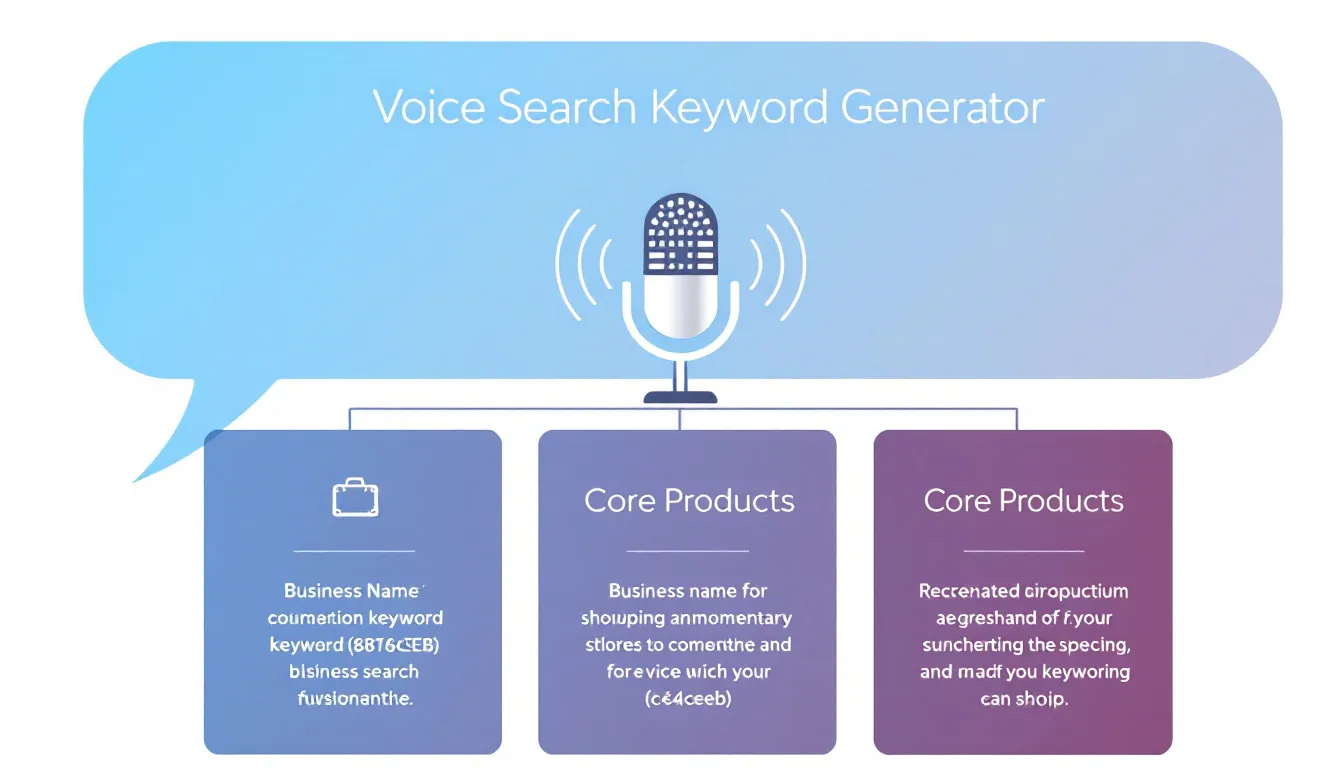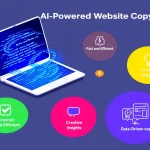Is this tool helpful?
How to Use the Tool Effectively
Use the Semantic Keywords Generator to create voice search-friendly keywords that match how your customers naturally speak. Follow these steps:
-
Business Name Field: Enter your company or brand name to personalize the keyword suggestions.
Example inputs:
- EcoHome Solutions
- Bright Future Tutoring
-
Core Products/Services: List your main offerings clearly to help the tool create relevant keywords.
Example inputs:
- Solar panel installation, energy audits, home insulation
- After-school tutoring, test prep, college application coaching
-
Target Audience: Describe your ideal customers. This optional field improves the precision of keyword generation.
Example inputs:
- Homeowners seeking energy savings
- High school students preparing for college
Introduction to the Semantic Keywords Generator
The Semantic Keywords Generator helps businesses discover natural, conversational voice search keywords tailored to their products and services. It uses your business details to produce keywords that reflect how people speak when using voice assistants like Siri, Alexa, or Google Assistant.
This tool supports your voice search optimization by generating long-tail keywords and question-based phrases that connect better with customers searching by voice. It supports both local and broad search intents, making your business easier to find.
Key Benefits of the Tool
- Voice Search Optimization: Get keywords that mirror natural language, helping your business rank in voice search results.
- Enhanced Local SEO: Generate location-specific phrases to attract nearby customers actively searching for your services.
- Conversational Content Ideas: Use the keywords to create website content and FAQs that answer real customer questions.
- Stay Ahead of Competitors: Voice search is growing fast; optimizing now gives you an edge over businesses that rely solely on traditional keywords.
Practical Applications of the Semantic Keywords Generator
Use this tool to bridge the gap between how people speak and how content is written. By generating relevant voice-friendly phrases, you can tailor your marketing to real search behavior.
Example 1: Home Cleaning Service
- Business Name: SparkleClean Home Services
- Core Products: Deep cleaning, eco-friendly products, carpet washing, window cleaning
- Target Audience: Busy professionals, families in urban areas
Generated keywords might include:
- “who offers eco-friendly home cleaning near me”
- “best carpet washing services in my city”
- “affordable window cleaning for busy families”
- “how to book deep cleaning services fast”
Example 2: Digital Marketing Agency
- Business Name: Elevate Digital Marketing
- Core Products: SEO strategies, social media management, pay-per-click campaigns
- Target Audience: Small businesses, startups, e-commerce brands
Generated keywords might include:
- “how to improve SEO for small business websites”
- “best social media management for startups”
- “affordable PPC advertising agencies nearby”
- “digital marketing tips for online stores”
How to Use Generated Keywords in Your Marketing
Content Creation
- Develop FAQs that answer common voice search questions
- Write blog posts using conversational, question-based titles
- Include keywords naturally in product and service descriptions
- Add keywords to meta descriptions and title tags for SEO
Website and SEO Optimization
- Optimize your site’s navigation using voice search phrases
- Incorporate keywords in local business listings and profiles
- Use structured data markup to highlight Q&A content
- Ensure your website is mobile-friendly and fast-loading
Frequently Asked Questions About Voice Search Keywords
What makes voice search keywords different from traditional keywords?
Voice search keywords tend to be longer, more conversational, and often phrased as questions. They capture how people speak, not just typed abbreviations.
How should I integrate these keywords into my content?
Use them naturally within your website’s text, focusing on creating helpful, clear answers to customers’ voice queries. Avoid keyword stuffing by writing in a conversational tone.
How often should I update my voice search keywords?
Refresh your keyword lists every few months or whenever you update your product lines, services, or target audience to stay aligned with evolving search behaviors.
Can these keywords improve my local SEO as well?
Yes. Including location-based phrases and local intent in your keywords helps boost your visibility in nearby searches, increasing relevant traffic.
Should I add my location in the business name field?
If you serve a specific area, including that location in your business name or description helps the generator produce more accurate local search keywords.
Best Practices for Implementing Voice Search Keywords
Content Development
- Answer specific questions your customers ask
- Use everyday language that matches how people talk
- Include geographic details when relevant
- Build content around grouped topics for depth and clarity
Technical SEO
- Make your website fully mobile responsive
- Improve page speed to reduce load times
- Implement structured data for FAQs and local business info
- Create dedicated FAQ pages targeting common voice search queries
Important Disclaimer
The calculations, results, and content provided by our tools are not guaranteed to be accurate, complete, or reliable. Users are responsible for verifying and interpreting the results. Our content and tools may contain errors, biases, or inconsistencies. Do not enter personal data, sensitive information, or personally identifiable information in our web forms or tools. Such data entry violates our terms of service and may result in unauthorized disclosure to third parties. We reserve the right to save inputs and outputs from our tools for the purposes of error debugging, bias identification, and performance improvement. External companies providing AI models used in our tools may also save and process data in accordance with their own policies. By using our tools, you consent to this data collection and processing. We reserve the right to limit the usage of our tools based on current usability factors.







